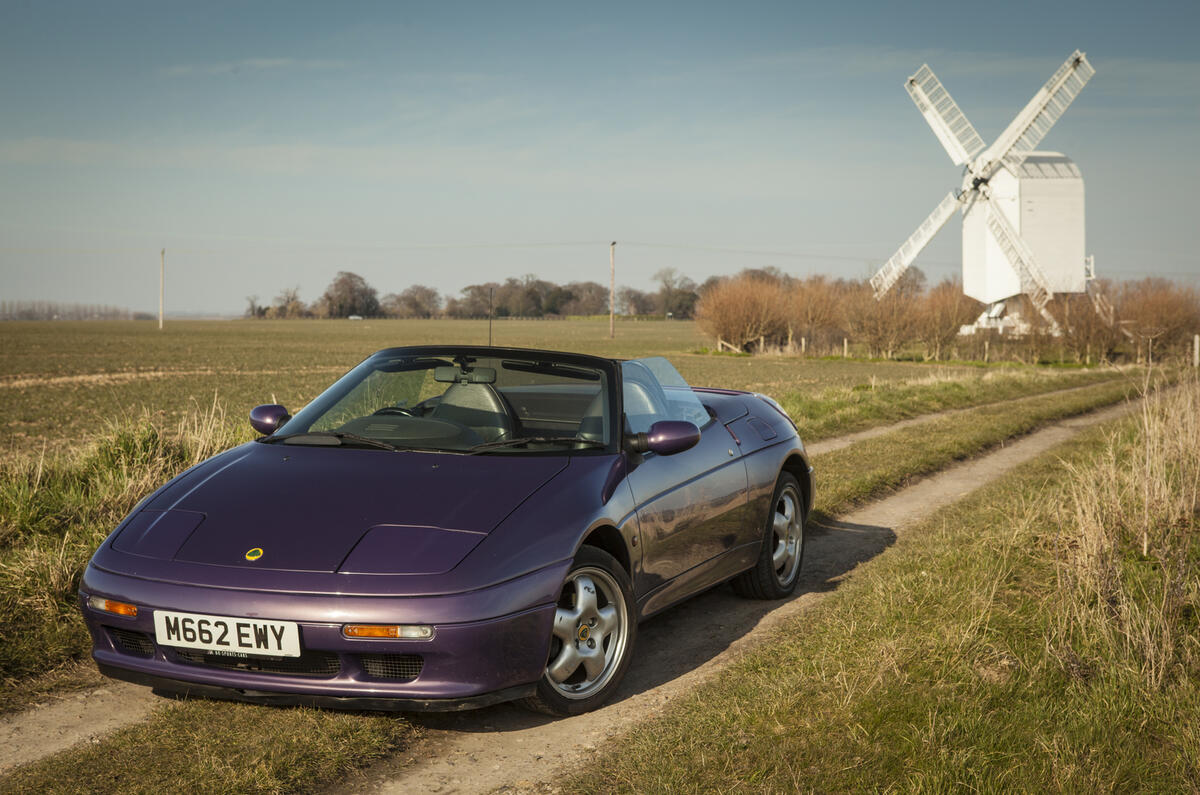A one-piece, bespoke foam and plastic-skinned dashboard. A quick-fold hood that didn’t leak and which stowed beneath its own lid. Electric windows good for more than five consecutive rises and falls.
Back in 1989, all this didn’t sound like a Lotus. Even more un-Lotus-like was the appearance of a Japanese engine beneath this car’s steeply plunging bonnet and, most jarringly of all, a drive system that sent power to the front wheels. This was the latest Lotus Elan, an all-new confection that, name and entertainment mission apart, bore no more than passing conceptual resemblance to its legendary predecessor.
Front-wheel drive was a first for Lotus and, for the moment at least, a last. But the Hethel engineers had their reasons, reckoning that “for a given vehicle weight, power and tyre size, a front-wheel-drive car was always faster over a given section of road. There were definite advantages in traction and controllability, and drawbacks such as torque steer, bump steer and steering kickback were not insurmountable.”
Hethel knew all this because its chassis engineers were working on plenty of high-volume front-drive cars via Lotus Engineering, the company’s consultancy.
There were practical and industrial reasons for wheels that pulled rather than pushed. Lotus had to source its engine and gearbox from outside the company, and back in the late ’80s nearly all the major car manufacturers were making and developing front-wheel-drive cars.
When development of the M100 began, Lotus was independent and buying components from Toyota. Its plan was to use the company’s superb twin-cam 1600 engine from the Corolla GTI and MR2. But then GM bought Lotus, closing that avenue off.
Lotus had to shop from it’s new owner instead – an unpromising prospect back then, until it discovered the 1.6 twin-cam turbo that Isuzu had under development (Isuzu made cars as as well as trucks back then), complete with five-speed transmission.
GM was also able to properly fund the car, the £35 million it invested granting Hethel vastly greater buying power than it had previously enjoyed. That’s what paid for the high-caliber interior and an extensive prototype test programme carried out not by Lotus buyers but by the company’s engineers.
Having settled for front-wheel drive, Lotus then set about making the new Elan’s chassis the very best of the breed.
At the rear were wide-spaced coil sprung double wishbones, a broadly similar arrangement used at the front, but for one vital and ingenious modification. Instead of mounting the wishbones direct to the M100’s backbone chassis, they were bolted to a pair of sub-structures that Lotus called rafts, the bushing and geometry control possibilities these afforded allowing them to exorcise torque-steer and bump-steer and provide the kind of small-bump compliance for which Lotuses are renowned.





Join the debate
Add your comment
Check out this website for car reviews and news! Also, don’t miss out on the fun at スイカゲーム for a cute and engaging gaming experience!
Great site for car reviews! Also, check out Soflo Wheelie Life for some exciting motorcycle stunt action!
Well engineered? Weren't these all too big as they didn't account for new material shrinkage in the tooling? Or is that a myth?